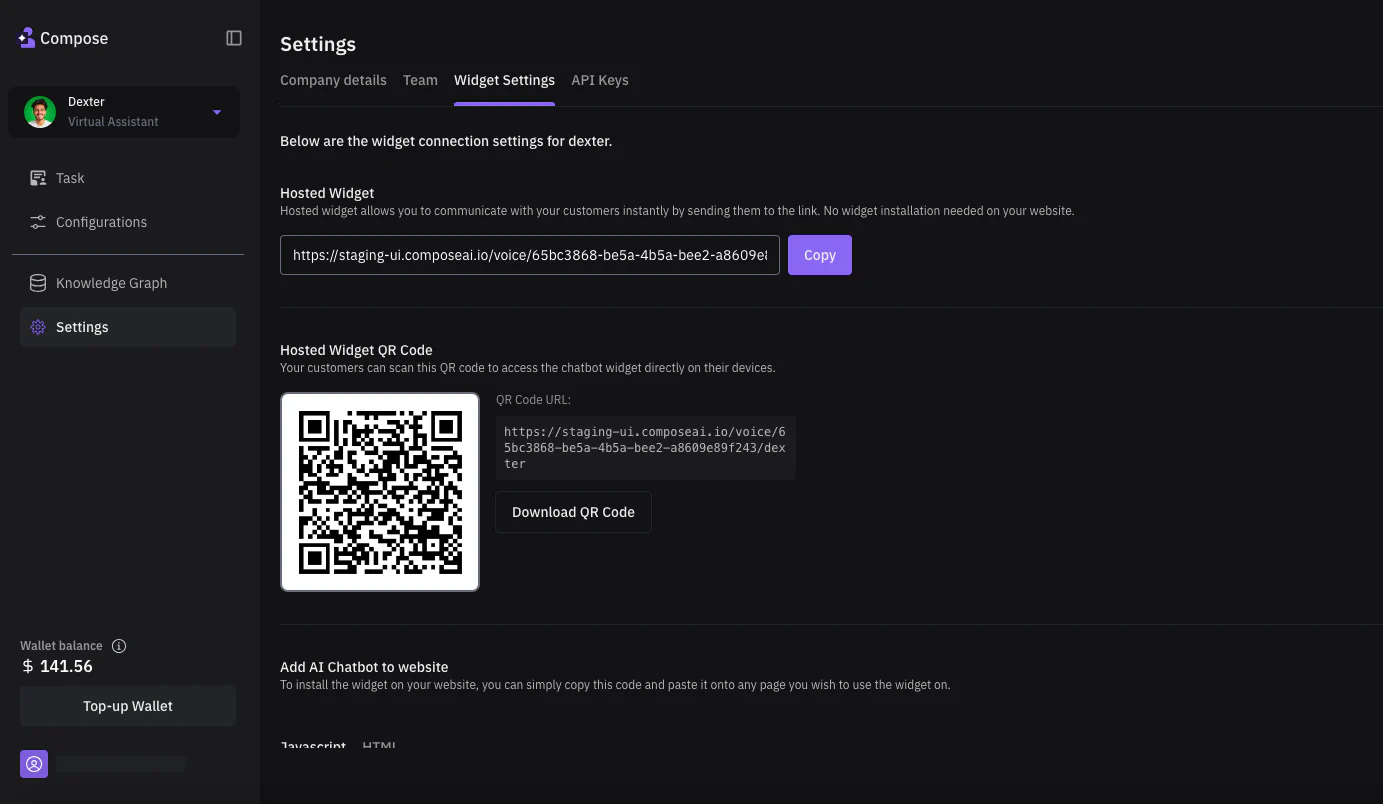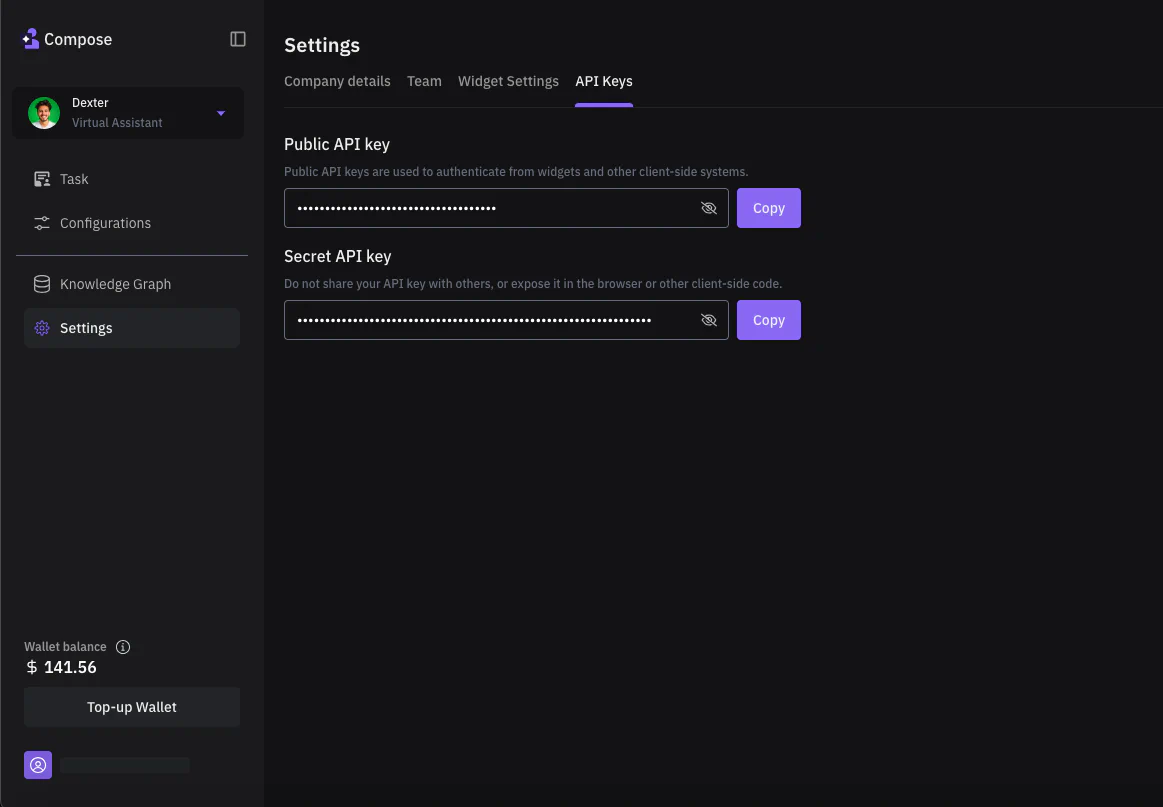Use Cases
By default, you and your team can interact with your agent through the cloud portal, but lot more sophisticated use cases can be unlocked beyond that. The channels configured for the agent, and data sources connected to the agent can allow you create infinite use cases for yourself, your internal team or for your customers. Without configuring channels, you will only be able to send task to your agent from the cloud portal.
The below are a few uses cases possible by configuring agents:
Customer Facing Conversational Agent
Example of these can include:
- Customer Email Support
- Customer Voice Support
- 24/7 Booking Service
- Triaging Agent for Healthcare Business
- Inbound Lead Call (Customer Profiling and Assessment)
Interacting with the configuration page creates a yaml that mirrors the configuration you’re making; below settings will be a section of the yaml that can create some unique use cases:
Inbound Voice Interaction
The below example shows a section of what would be an ideal settings to configure an agent that will be able to take inbound voice conversations.
Inbound voice interaction over api auth.
The below makes the agent take inbound conversation over voice widget. Turns off the video, end ensures the authentication is required. The authentication information is coming from a connected knowledge graph called “UserDataSource”. To make the agent not require authentication, set authentication: false
engine: taskflow
mode: conversational_inbound
- credentials:
allow_video: false
authentication: true
type: api
users: "UserDataSource"
name: widgetThe users of this channel will connect via a special URL that can be found on the settings > Widget Settings. From the page, you can share the URL or QR code with the users that can authenticate against the agent based on the configuration.

Inbound Voice interaction static list
The below makes the agent take inbound conversation over voice widget. Turns off the video, end ensures the authentication is required, but only from known list of people with the stated email. Not ideal for large number of people as api authentication type will be more effective for large number.
engine: taskflow
mode: conversational_inbound
- credentials:
allow_video: false
authentication: true
type: static
users:
- "user1@email.com"
- "user2@email.com"
- "user3@email.com"
name: widgetInbound Mail Interaction
The below example shows a section of what would be an ideal settings to configure an agent that will be able to receive an email of task to be done. This can be used for a customer support agent that responds to customers over email, an internal team agent that responds to the team, or an agent that allows potential customers to make enquiries.
Default Email Receiver
The below settings allow a Compose AI user to be able to assign task to the agent over email. The user can send the task to ai.employees@composeai.io to assign task to the agent, but the email must come from the email account used to create an account.
channels:
- credentials:
imap_mail_server: system
mail_from: ai.employees@composeai.io
mail_password: system
mail_username: system
smtp_mail_server: system
name: emailCustom Email Receiver
This use case allows for email defined in api-datasource-name (which could be your customers), to be able to interact with your agent. The below settings allow a Compose AI user to connect to a custom IMAP/POP server to receive email sent to your agent. The authentication: true means the agent will only answer to some users that are in the api-datasource-name. If authentication, types and users are not defined, only the Compose AI account will be able to send a task to the agent.
channels:
- credentials:
imap_mail_server: imap-email-server.com
mail_from: email@server.com
mail_password: IMAP/POP-Password
mail_username: email-username
smtp_mail_server: smtp-mail-server.com
name: email
authentication: true
type: api
users: "api-datasource-name"Custom Email Receiver
Allow anybody to email your agent. Could be useful for an enquiry based based agent. This can only be done with a custom maul server not ai.employees@composeai.io
channels:
- credentials:
imap_mail_server: imap-email-server.com
mail_from: email@server.com
mail_password: IMAP/POP-Password
mail_username: email-username
smtp_mail_server: smtp-mail-server.com
name: email
authentication: false API interaction
Sending tasks via APIs allow you to integrate the agent orchestration layer into your other systems. You can create a new task by sending an API that looks like the structure below.
curl -X 'POST' \
'https://api.composeai.io/api/v1/tasks/' \
-H 'accept: application/json' \
-H 'X-API-KEY: API-Secret-Key' \
-H 'Content-Type: multipart/form-data' \
-F 'priority=medium' \
-F 'task=Do one, two and three for me' \
-F 'agent_id=abcd-1234-efgh-0987-djhd' \
-F 'frequency=dnr' \ The API-Secret-Key can be gotten from Settings > API Keys

Telephone Interaction (Coming Soon)
Telephone receiver allows you to configure agentic use cases similar to the described ones above. You can either allow your known phone number, a list of known phone numbers, an API call that returns phone number authenticate against the agent to be able to interact with it. Also, you can set authentication:false on the channel, allowing any body to be able to interact with the agent.
Let anyone call the agent
channels:
- credentials:
sip_trunk: telephone_trunk
sip_credential: credentials
name: telephone
authentication: false Let a list of known numbers call the agent
channels:
- credentials:
sip_trunk: telephone_trunk
sip_credential: credentials
name: telephone
authentication: true
type: static
users:
- "010203040506"
- "030203040506"
- "090203040506" Let known phone number authenticate via api
channels:
- credentials:
sip_trunk: telephone_trunk
sip_credential: credentials
name: telephone
authentication: true
type: api
users: "users-datasource-name"